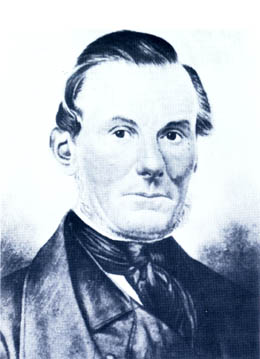On December 1, 1843, Englishman James A. Scarborough (1805-1855) settles at Chinook Point on the Columbia River in what will become Pacific County, Washington. Scarborough will file a Donation Land Claim and occupy the property until his death in 1855. The land will ultimately become Fort Columbia, part of the U.S. Army’s defense of the mouth of the Columbia River.
James Scarborough was born in Ilford, County Essex, England, in 1805. In 1829, he joined the Hudson’s Bay Company (HBC) and in May, 1830, first crossed the Columbia River bar aboard the Isabella as second mate and boatswain. He worked for HBC for the next 20 years.
On October 30, 1843, Scarborough married Ann Elizabeth, a Chinook Indian. About this time he established a farm on Chinook Point where Chief Comcomly and his six wives once lived. This became known as Scarborough (and then Scarboro) Hill.
Congress enacted the Donation Land Law in 1850 and James and Ann Scarborough filed for the land they were living on and working. They ended up with 643 acres extending about a mile along the north bank of the Columbia River and including all of Chinook Point and most of Scarboro Hill.
Captain Scarborough retired from the Hudson’s Bay Company in July, 1850, after 20 years of service. He moved permanently to his land and devoted himself to farming, commercial salmon fishing, and piloting mail steamers over the Columbia River bar.
The farm prospered as the captain, fond of plants, set out many fruit trees as well as other ornamental and useful trees and shrubs. He planted a Hawthorn tree on the slopes of Scarboro Hill in about 1848. This tree was used as a local landmark and navigation guide until 1897, when the Army created a local uproar by cutting it down. Locals took slips from the tree and the many resultant Hawthorn trees are still visible throughout the area.
Ann Scarborough died in 1852 and Captain Scarborough died two and a half years later, on February 4, 1855. On April 23, 1856, James Birnie, guardian of Scarborough’s two young sons, sold the Scarborough Donation Land Claim to Rocque Ducheney for $1,250.
On March 7, 1864, Captain George Henry Elliot bought the property on behalf of the United States from Ducheney’s heirs for $2,000. An additional $1,000 was paid to Ducheney’s widow and her new husband for a quit-claim deed renouncing all interest in the property. The Secretary of War approved the transaction and the deed was recorded on March 13, 1867.
In 1898, the property became the U.S. Army's Fort Columbia. At the end of World War II, Fort Columbia was declared surplus and in 1950 was transferred to the custody of the state of Washington. Since then it has been a state park. Twelve historic wood-frame buildings still stand on the premises.

